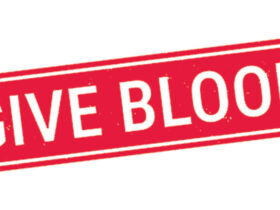The sixth most commonly diagnosed cancer in the nation, bladder cancer is also one of the most difficult to diagnose and the most likely to recur if not fully diagnosed and treated.
Today, urologists at Venice Regional Bayfront Health have a new technology for diagnosing non-muscle invasive bladder tumors. Called “blue light cystoscopy”, the system lets the doctor inspect the bladder lining very closely for any abnormal growths or suspicious areas. Once lesions are identified, doctors can surgically remove cancerous tissues.
“Bladder cancer is difficult to detect and has a high rate of recurrence. An inaccurate diagnosis can result in incomplete treatment, which may lead to serious complications and a lower chance of survival for patients with potentially aggressive tumors,” noted urologist Carl Klutke, M.D., an independent member of the Venice Regional medical staff. “Blue light cystoscopy represents an important advancement in diagnostic technology, enabling more accurate diagnosis of non-muscle invasive bladder tumors compared to the standard technique.”
The American Cancer Society estimates that in 2018, more than 80,000 new cases of bladder cancer were diagnosed in the United States. Up to 50 percent of patients will have their bladder cancer recur – that’s the highest recurrence rate of any form of cancer.
Researchers do not know exactly what causes most bladder cancers. But they have identified some risk factors and are starting to understand how they cause cells in the bladder to become cancer. Information about risk factors is available at www.cancer.org.
Bladder cancer can often be found early because it causes symptoms that cause a person to see a health care provider. Symptoms may include blood in the urine intermittently, difficulty urinating, a burning sensation while urinating, or feeling like you have to urinate even when your bladder isn’t full. The early stages of bladder cancer are simpler to treat.
Urinary symptoms or blood in the urine don’t always mean you have bladder cancer. More often they are caused by other things like an infection, benign (not cancer) tumors, stones in the kidney or bladder, or other benign kidney diseases. Still, it’s important to have symptoms checked by a urologist so the cause can be found.
Diagnosing bladder cancer usually begins with laboratory tests to narrow down the source of symptoms. If cancer is suspected, cystoscopy is the likely next step.
With blue light cystoscopy, the doctor inserts an optical imaging agent into the bladder via a catheter and waits at least one hour for tumors to absorb the agent. Then the doctor examines the bladder lining with a white light and then a blue light. Under blue light, the imaging agent makes bladder cancer glow bright pink so it’s easier to see and either biopsy (excise a piece or pieces of the lesion) or remove the lesion entirely. The excised tissue is then examined to determine if it is cancerous.
“The addition of this technology enhances our hospital’s diagnostic capabilities and further demonstrates our commitment to advancing patient care,” said Venice Regional CEO Karen Fordham. “At Venice Regional, patients with known or suspected bladder cancer can now undergo diagnostic procedures performed by physicians who have been specially trained in the use of this innovative technology.”
For more information about bladder cancer and the blue light cystoscopy diagnostic technology, please call 941-483-7797.
Information from the American Cancer Society (www.cancer.org) was used in this report.
Venice Regional Bayfront Health
Call 941-483-7797 or visit VeniceRegional.com









